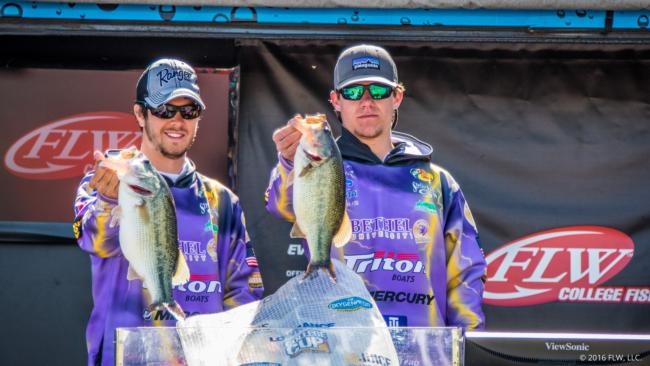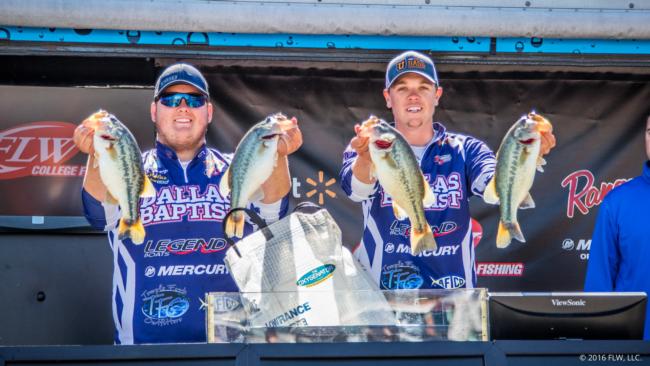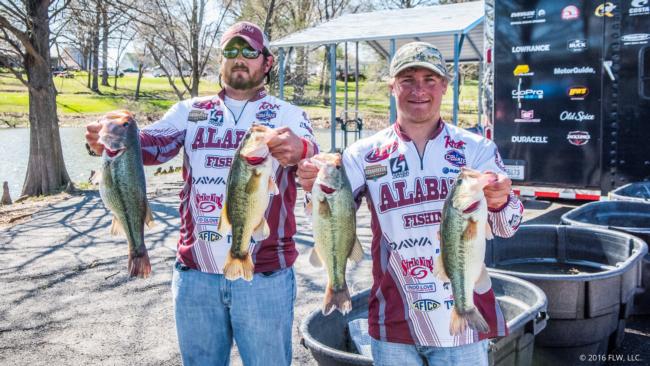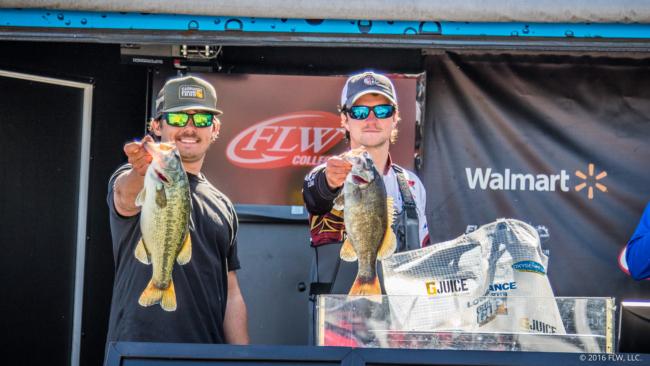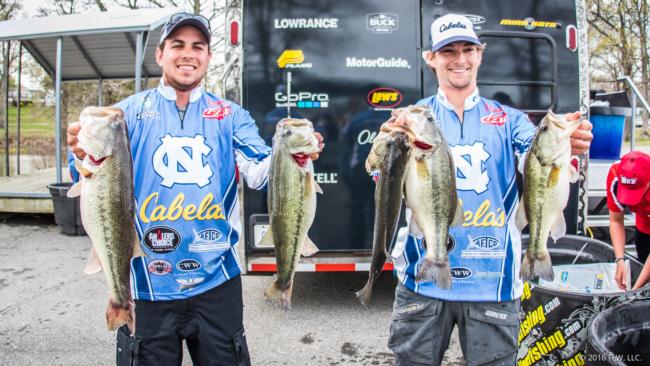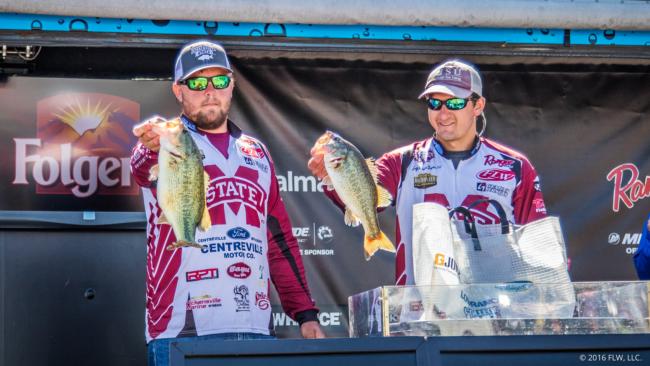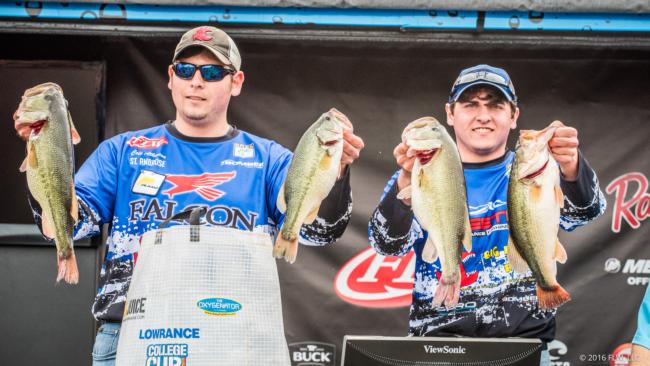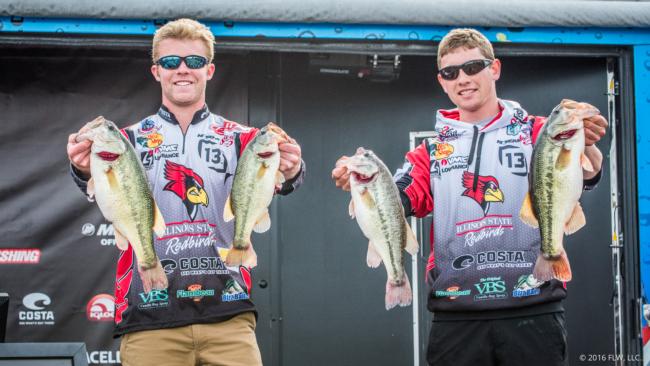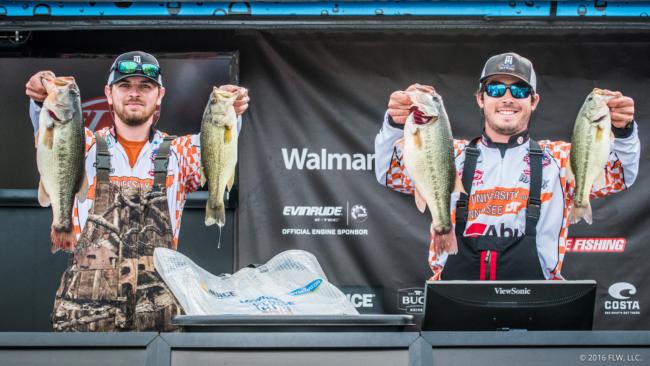Top 10 Patterns from Kentucky Lake
How to catch prespawn fish on Kentucky and Barkley Lakes
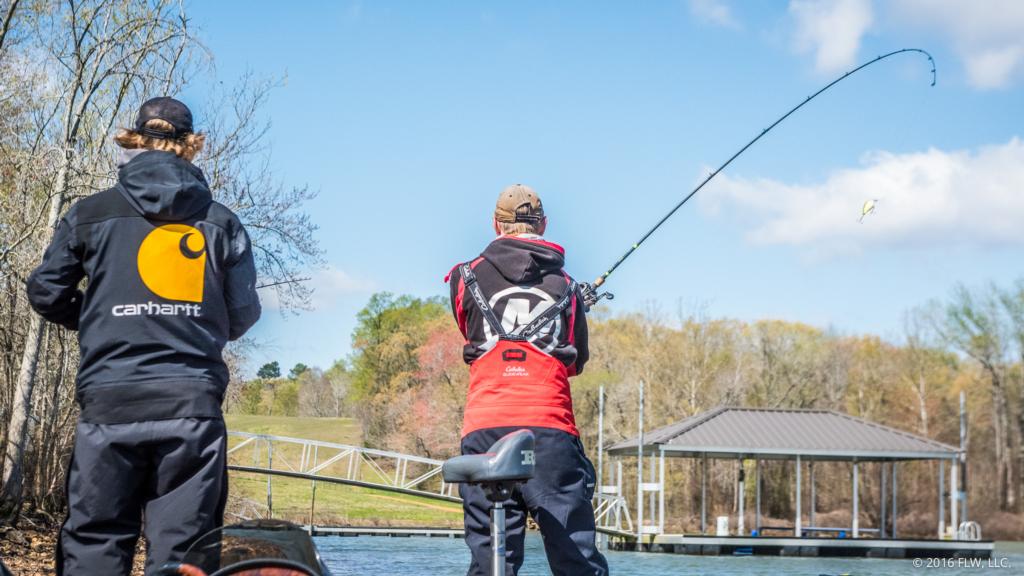
The range of baits used by competitors in the FLW College Fishing Open on Kentucky Lake shrank considerably between practice days earlier in the week and the tournament’s final round. Blame the deteriorating weather, which was characterized by passing cold fronts that dropped water temperatures and left gusting winds in its wake.
Though Kentucky Lake proved to be too stern a test for many of the college teams, Zach Hartnagel and Dalton Wesley of Southern Illinois University-Edwardsville found adjacent Lake Barkley to be more accommodating. They won the event with two productive days on the Cumberland River impoundment, which is connected to Kentucky Lake by a canal at their northern ends (See story here).
Otherwise, most of the top contenders who finished in the top 15 and earned a berth in the 2017 FLW College Fishing National Championship pinned their hopes on Kentucky Lake. Here’s how they did.
2. Bethel University, Carter McNeil and Cole Floyd, 33-1
The Wildcats from down the road at McKenzie, Tenn., brought 10 teams to the Open, but only one was in contention after the opening round. That was McNeil and Floyd, who jumped from 10th to second on the strength of a 17-pound, 1-ounce limit – the day’s best.
As anticipated, Coach Garry Mason’s roster spent most of the time fishing in familiar territory below the Paris Landing, Tenn., bridge, a boat ride of almost an hour and a half from tournament headquarters at Moors Resort & Marina.
McNeil and Floyd, both freshmen, settled on cranking Strike King Redeye Shad (bone white) in 2-3 feet of water.
“This was our first tournament in FLW College Fishing, so we were pretty pleased,” says Floyd.
3. Dallas Baptist University, Colt Benedict and Trent Newman, 32-6
For a team that had never laid eyes on Kentucky Lake before, the Patriots represented their school well with two solid stringers that only lacked a couple of fat prespawn females to put the anglers in contention for the title.
Benedict and Newman fished Sledd Creek and other bedding coves on the northwest side of the impoundment near the dam. They also keyed on bluff banks near the mouths of the coves.
“We had to fish really slow to catch anything,” says Newman. “We fished finesse jigs and shaky heads and probably our most productive spot was a big, deep flat that had a subtle ledge on the outside and softball-size rock on the bottom. We had a small limit by 8 o’clock [Saturday], but couldn’t upgrade.”
4. University of Alabama, Ethan Flack and Caiden Sinclair, 32-1
Both anglers fished the 2015 Kentucky Lake Open, and Flack was on the Crimson Tide team that finished second. Flack and Sinclair parlayed the experience gained in that event to make their second trip to Kentucky Lake almost as successful.
“We never really got off the Alabama rig,” says Flack. “We used shad-colored swimbaits and just fished them down points and over humps in about 5 to 10 feet of water.”
Same script, different year for Flack, who also relied on an umbrella rig last year. Considering that Alabama only missed winning the 2015 Open by 8 ounces, it’s understandable.
“Actually, the fishing was better for us today [Saturday] than it was yesterday [Friday],” adds Flack. “We had our limit by 10 o’clock and then culled twice. The biggest difference for us is that we never really got on any good fish – fair limits, but nothing that’s going to lock up a tournament like this against competition like this.”
5. University of Louisiana- Monroe, Thomas Soileau and Hunter Freeman, 31-9
The Warhawks were one of several teams that made fruitful runs south to Tennessee waters and were able to move up in the standings from 15th place after day one. Soileau says the pair settled on fishing shallow bars in the New Johnsonville area where bass were staging in preparation for the spawn.
“We were dragging V&M football jigs [green pumpkin] with Rage Craw trailers across the bars,” notes Soileau. “It was slow going and we didn’t cull up any. We heard that the fishing had really been good here for the past couple of weeks, but it was sure tough for us. Still, we’re going to fish the national championship next year, so mission accomplished.”
6. University of North Carolina-Chapel Hill, Stephen Smith and Graham Burke, 31-4
In college fishing circles, the first order of business is to catch enough bass in a tournament to contend. The second most important task usually involves keeping boating and fishing equipment in good working order. Given the limited budget and discretionary spending cap usually imposed on a college angler, however, that second requirement often goes wanting.
Considering the various boat problems they had to deal with during the course of the Open, then, Smith and Burke did OK for themselves. After their outboard conked out on day one, they came in to Moors on trolling motor power with a 16-14 sack that put them in 8th place. On day two, their boat broke down again – this time a bit farther away – and Burke had to return to the weigh-in with their fish while Smith remained with their boat. More than 16 pounds on day one and 14-pounds-plus on day two – every angler should have such breakdowns.
“We fished riprap points and banks with shaky heads and jigs and really just stayed around this area,” Burke told the weigh-in crowd at Moors. “We couldn’t really go very far, so we fished slow the whole time and probably that had a lot to do with why we did as well as we did.”
7. Mississippi State, Jeff Roman Clayton IV and Cody Peak, 30-5
The Bulldogs moved up 10 places in the final round to make their 50-mile run south worth the beating they took getting there and back.
“Friday we fished Strike King 2.5 crankbaits (chartreuse with black backs) and also caught one key fish on a Strike King 6XD,” according to Peak. “But it really slowed down today [Saturday]. Where we caught eight keepers on Friday, we only had five bites today.”
When the crankbaits stopped working, the pair switched to 3/8-ounce shaky heads rigged with Zoom Trick Worms (june bug red), and fished them at a slow crawl along rocky points and riprapped banks.
“Sometimes we would take about 5 minutes just to get one cast back in,” notes Peak, a junior forestry major. “That was the only way we could get bit.”
Clayton says the teammates found the area while fishing a tournament out of Danville, Tenn., a few weeks ago. Neither angler has fished a College National Championship before, but will have the opportunity in 2017.
8. St. Ambrose University, Cole Atkinson and Tanner Atkinson, 29-13
With a nickname like “The Fighting Bees,” you’d figure St. Ambrose of Davenport, Ia., might not have the sting to compete in a top-level college tournament. You’d be wrong. Brothers Cole and Tanner Atkinson came out of the gate at a gallop with a 21-pound, 8-ounce limit and expressed confidence that they could repeat their performance in the final round. That was before a passing cold front intervened, however.
“We were catching our fish down in the Blood River area along rocky points in 1 to 8 feet of water,” says Tanner. “The problem was is that the way the best points laid out, the [west] wind was blowing against them and it muddied them up.
“So we were getting, maybe, a bite an hour but by 11 it had gotten so windy that we couldn’t hold the boat in place. We left that and tried to get on some other fish we had found, but that didn’t work out either.”
The brothers fished with SPRO or Rapala crankbaits in the standard shad patterns. In the opening round, they culled three times and had two fish that approached 6 pounds apiece. On day two, they had to settle for four keepers that weighed just over 8 pounds.
9. Illinois State University, Taylor Umland and Justin Schick, 27-15
The Redbirds and St. Ambrose were the only two teams that had 20-pound-plus limits – that on day one. In the last round, Umland and Schick had two bass that weighed 7-9.
“We’d been catching our fish on A-rigs (umbrella rigs) with Bass Pro Speed Shads (shad) and Bass Pro vibrating jigs, but it was totally different on Saturday,” notes Umland. “The fish weren’t nearly as aggressive, and by noon we didn’t have a keeper in the boat. So we slowed way down and managed to catch our two keepers by dragging jigs.”
In the opening round, Umland and Schick focused their attention on secondary points toward the backends of coves. Wood cover was critical, and the clearer the water, the better.
“We also caught some fish by just dragging the vibrating jig over shallow rocks,” adds Umland. “We were throwing the A-rigs out in deeper water (16-20 feet) and they would hit it as it started to rise toward the boat.”
10. University of Tennessee, Jay Emmert and Anthony Johnson, 26-15
Emmert and Johnson were in fourth place after day one, but didn’t stick around to learn that they had finished in the top 10. No matter; they’ll be fishing in the National Championship next year.
As was the case for everyone, the Volunteers were victimized by the drop in temperature and building west wind in the final round. They had a limit of 18-5 in the opening round, but could only scrounge up three fish for 8-10 on day two.
“We wound up dragging Carolina-rigged Zoom lizards (pumpkinseed) along secondary points inside the big spawning coves,” says Emmert. “The bite was really slow. We broke off three fish that would have helped us, but I guess just about everybody else could say the same thing.”
